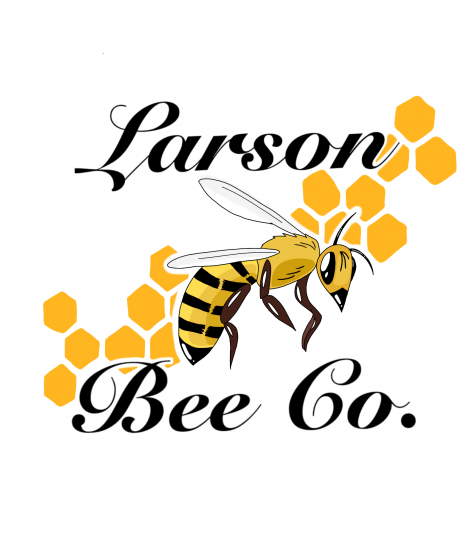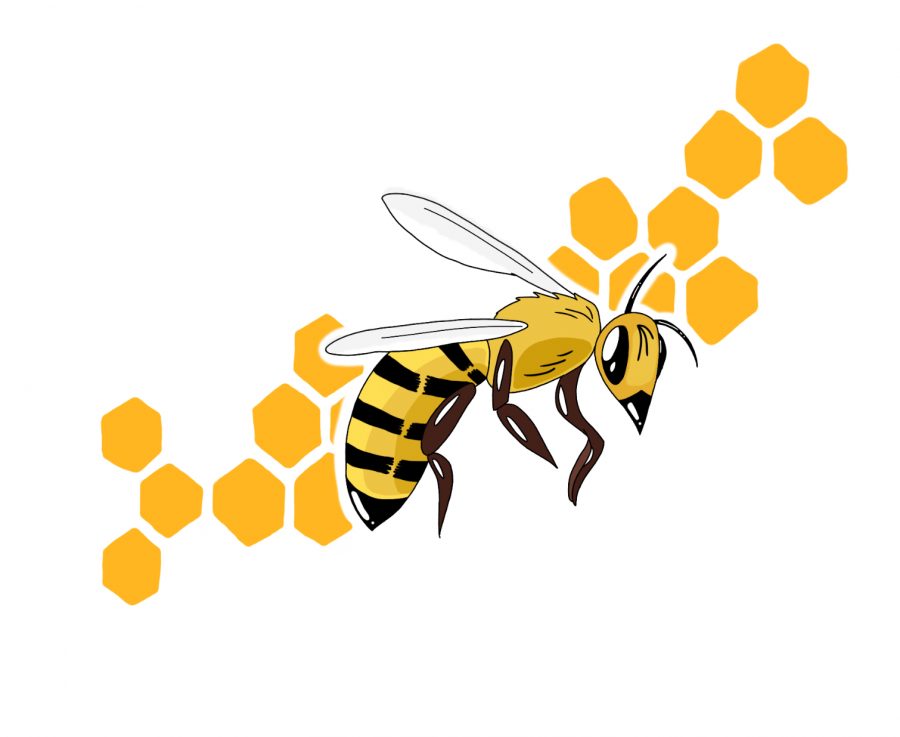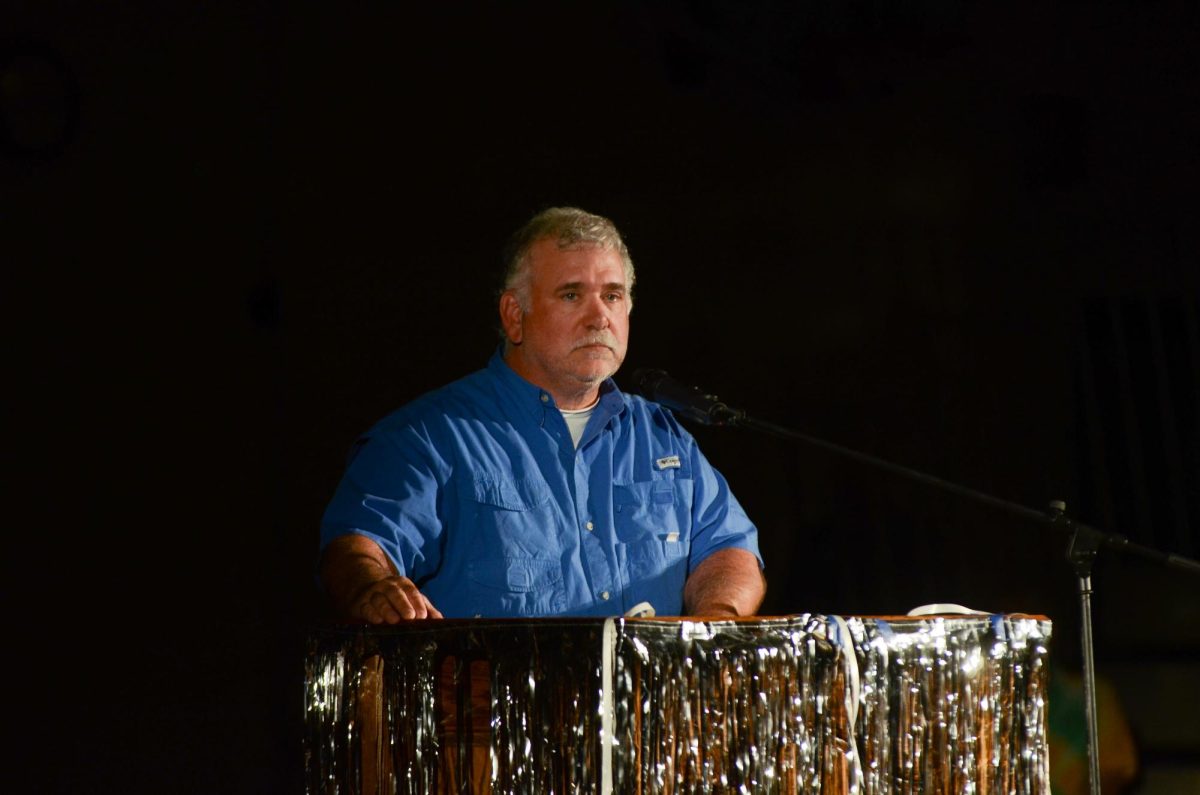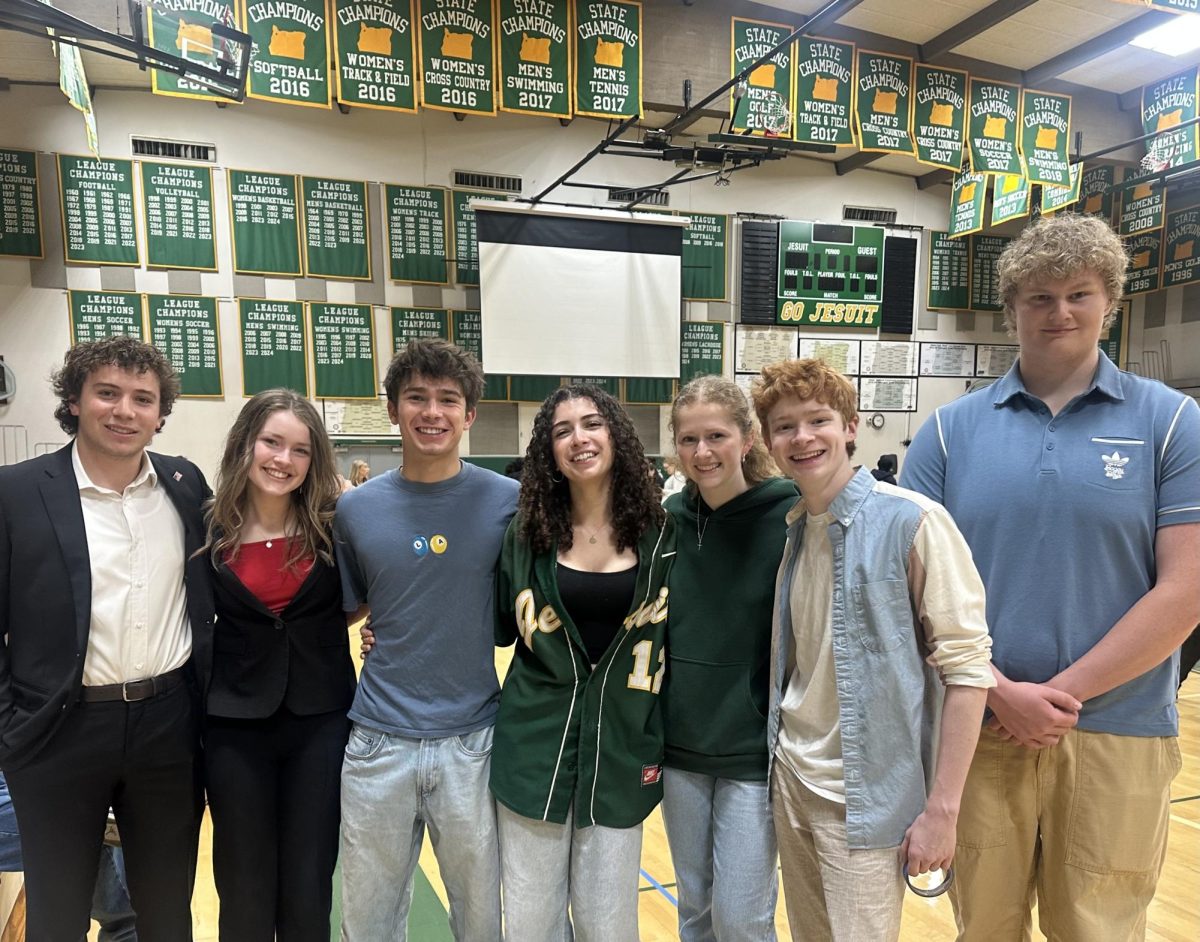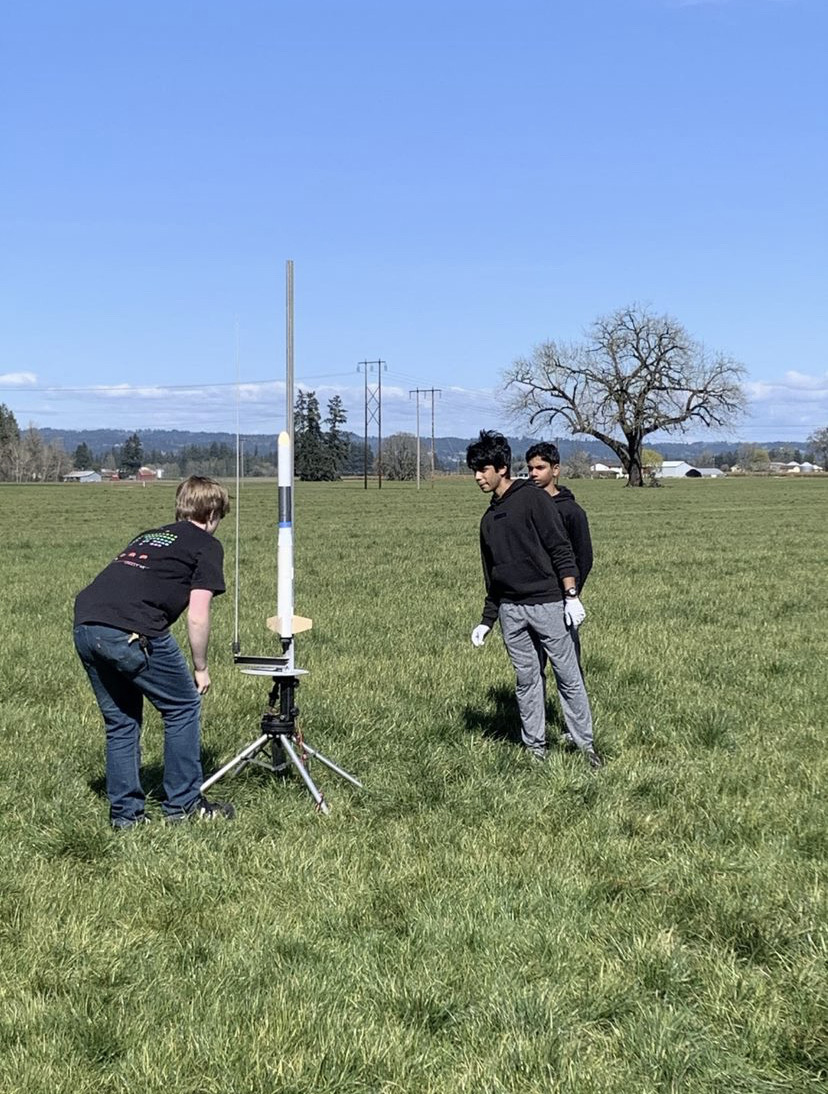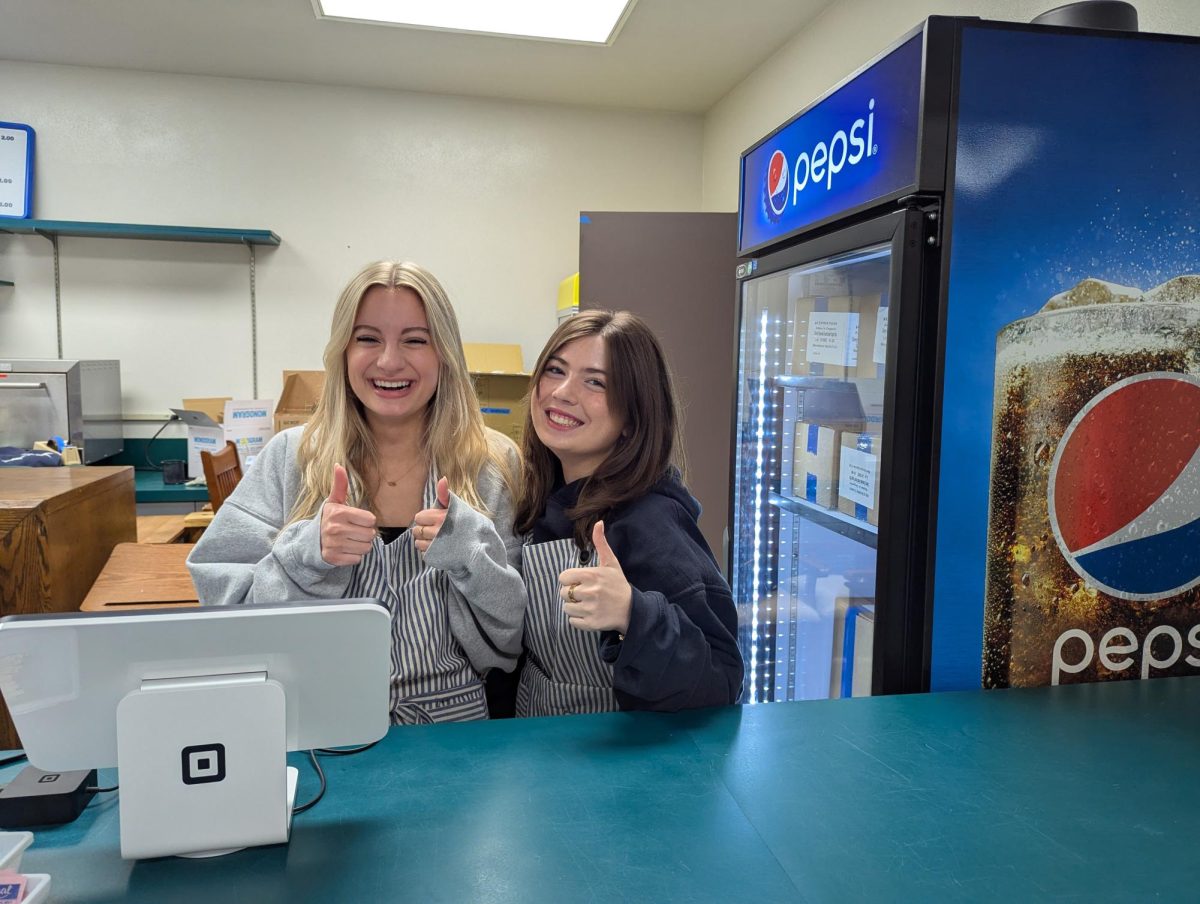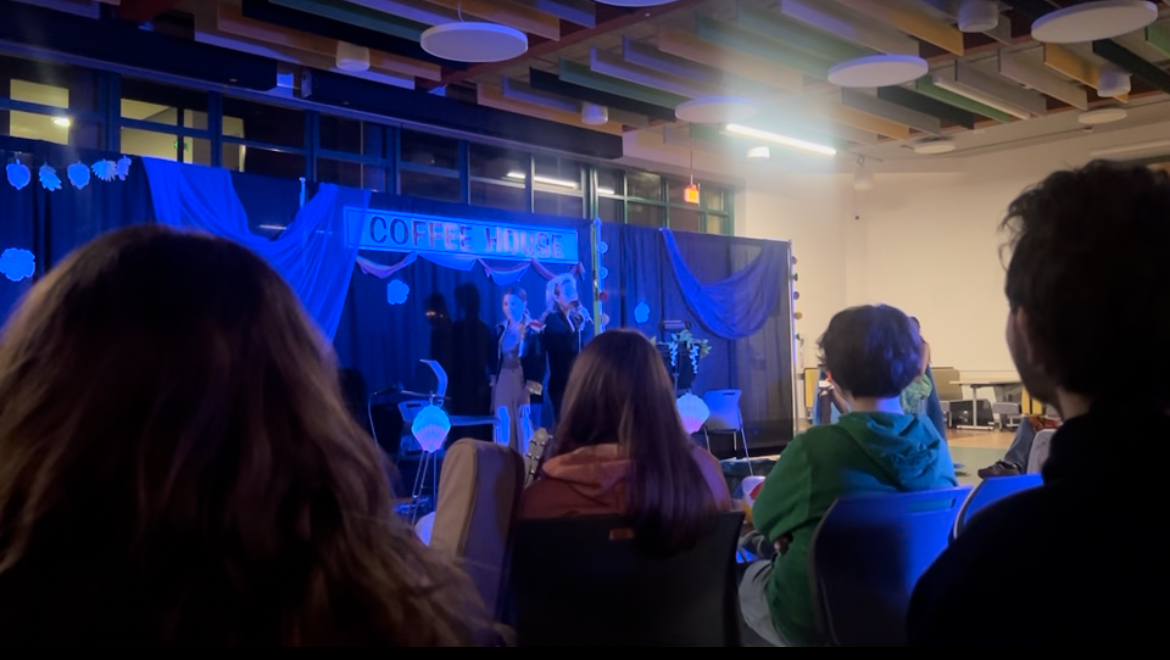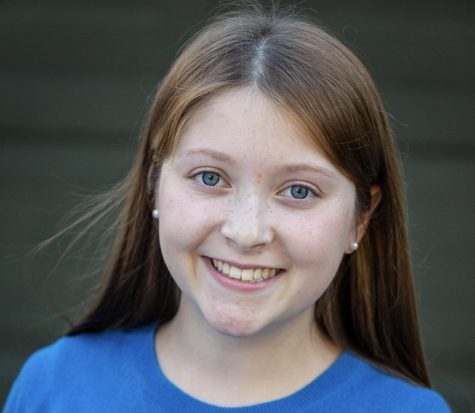Best in the “Buzz”-iness
By Steele Clevenger
November 18, 2019
How did senior Jonas Larson get into the beekeeping business? Shrugs Larson, “I just thought it would be a fun thing to do.”
Larson, who owns Larson Bee Company, began beekeeping his freshman year at Jesuit. “My first season with [the bees] didn’t go that well,” he said. “The bees all died in the winter.”
According to Larson, 80 percent of first time beekeepers quit within the first five years.
“I wanted to keep going,” Larson said. “So, I bought some new bees. They were doing great over the summer and were making a lot of honey, so me and some friends went to harvest it.”
To harvest the honey, Larson recruited seniors Sam Curran and Declan O’Scannlain.
The first step in harvesting honey is “collecting the hive.” Larson, Curran, and O’Scannlain went to work, brushing bees off the hive in Larson’s backyard using a bee brush, (although both Curran and O’Scannlain agree that Larson did most of the brushing).
“The goal is to get all of the bees out of the hive because it’s harder to extract the honey if there’s bees inside the honey,” O’Scannlain said.
The bees, however, had other plans. Each time Larson brushed the bees from the hive, they would fly right back into their home. To ensure that the bees would fly away from the hive, Larson, Curran, and O’Scannlain placed the hive in a wagon, and walked around Larson’s neighborhood.
“Every bump, we were trying to catch [the hive], making sure it didn’t fall out of [the wagon],” Curran said.
After collecting the first hive, the three beekeepers drove to the location of Larson’s second hive, repeating the brushing process, afterwards placing the hive and the leftover bees in the back of Larson’s car.
“We drove to get lunch, and we left the windows open in hopes that [any remaining] bees would fly away,” said O’Scannlain.“Instead, every bee in the Bethany area came and swarmed our car!” said Curran.
The Sheriff’s department was called and the thousands of bees swarming Larson’s car began to swarm a nearby car as well.
Finally, Larson, Curran, and O’Scannlain, along with some bees that were reluctant to leave the hive, drove towards a farm in Aloha, where the honey is extracted from the hives.
“You put the [hive] in a centrifuge, and it spins really fast. As it spins, the honey goes to the outside [of the centrifuge], and then goes down and collects in the bottom [of the machine]. Then you put a bucket under [the centrifuge] and collect [the honey],” O’Scannlain said.
The collected honey comes in a variety of flavors, including blackberry and Oregon wildflower.
“My favorite part has been getting people come to me and say my honey tastes great,” said Larson. “[Beekeeping] is pretty difficult work, but it ends up being very rewarding once you get the honey out.”
With his first successful honey harvest, Larson was able to extract five gallons of honey, which sold to friends, Jesuit students and students at Wilson and Lincoln High Schools.
Larson says he never anticipated making money from beekeeping, however, until he began harvesting honey, and realized he had a lucrative new hobby.
“The hardest part for me is logistics: figuring out who wants honey, how much, where to deliver it, etcetera,” said Larson. “Most of the real labor was done earlier in the year, though, when I was managing the hives more actively. That’s what pays off later.”
When asked how he balances managing a business with school and other activities, Larson replied calmly.
“For the most part, it’s been pretty easy, since I only need to spend a few minutes a day jarring the honey when I get it,” said Larson. “More recently, though, it’s been hard to find time to market and sell when I have to work on college applications. Hopefully, when I get those finished, I’ll be able to expand the business and sell the rest of my honey, as well as selling t-shirts.”
As Larson heads off to college, he plans to leave his hives in the hands of trusted friends.
“I’m giving one hive to a friend of mine whose dad wants to try beekeeping, while the other one will stay where it is to be managed by a couple friends. They might not be selling [honey], but they can help the bees with their hive.”
To purchase honey or a t-shirt, email Larson at [email protected].
